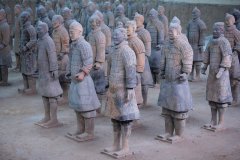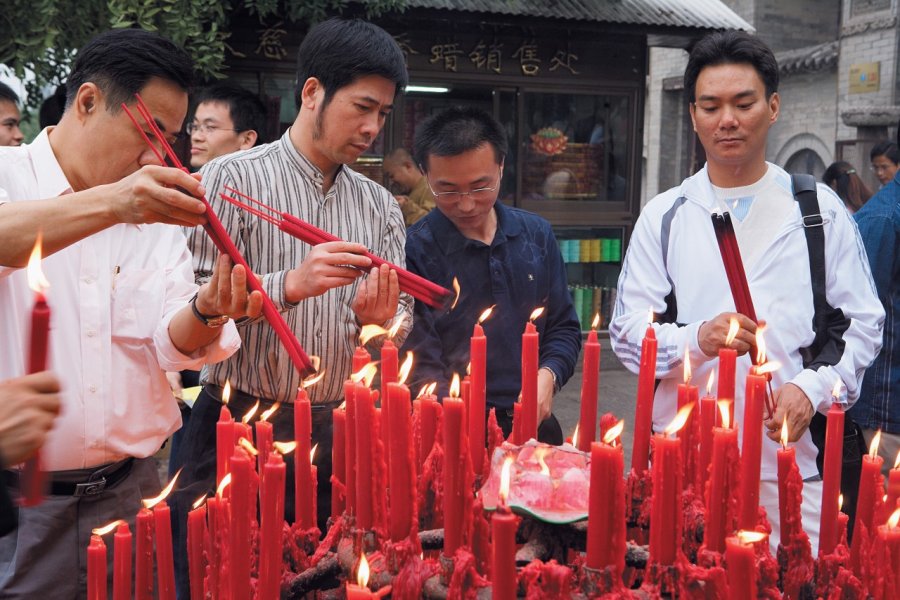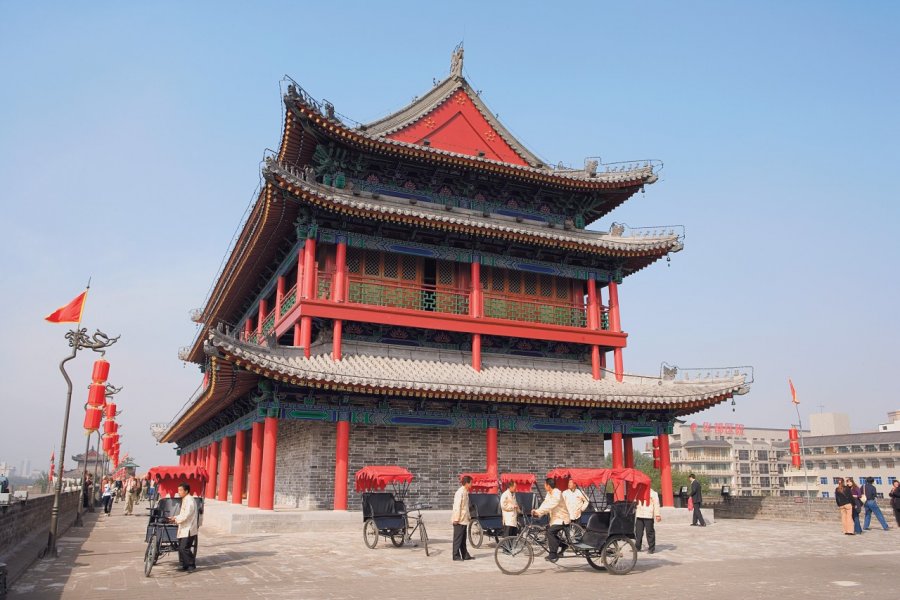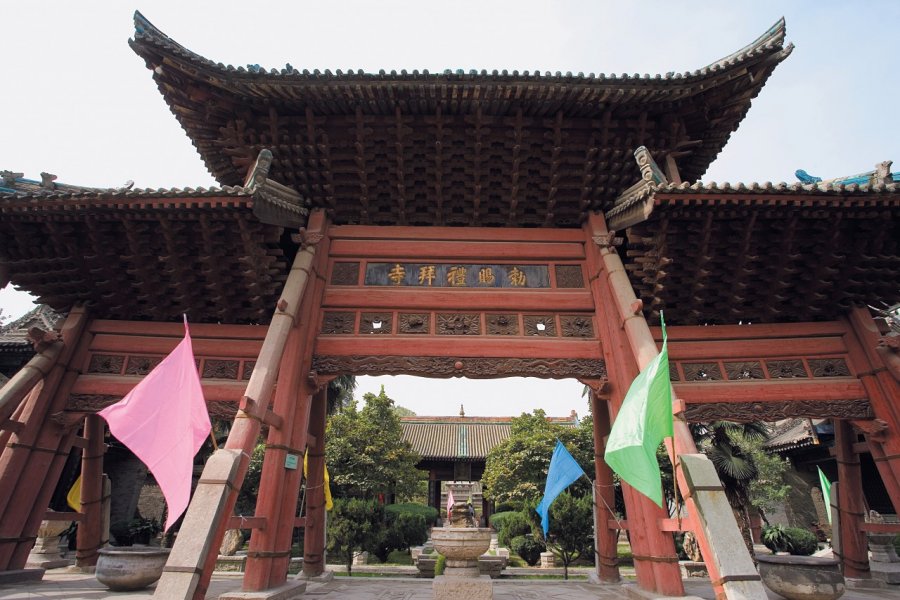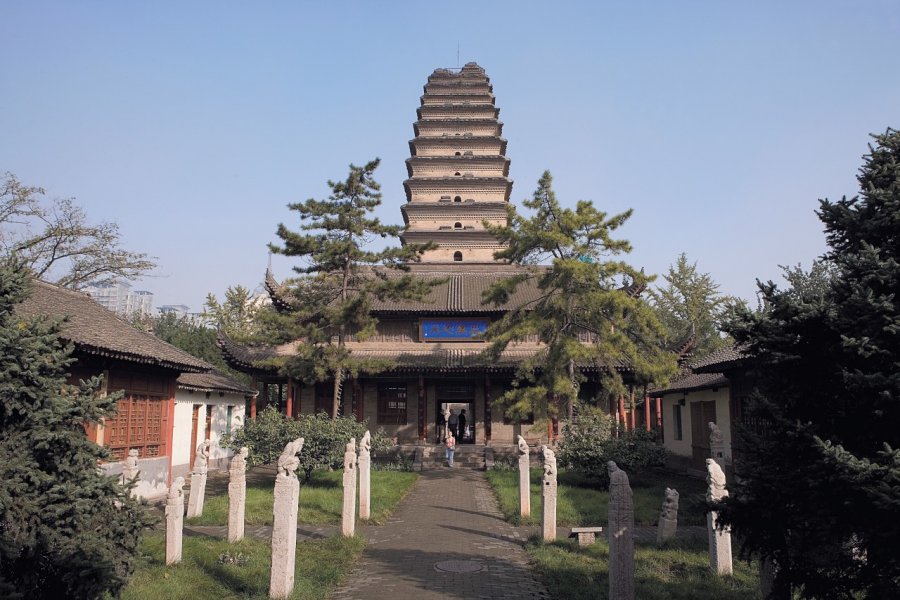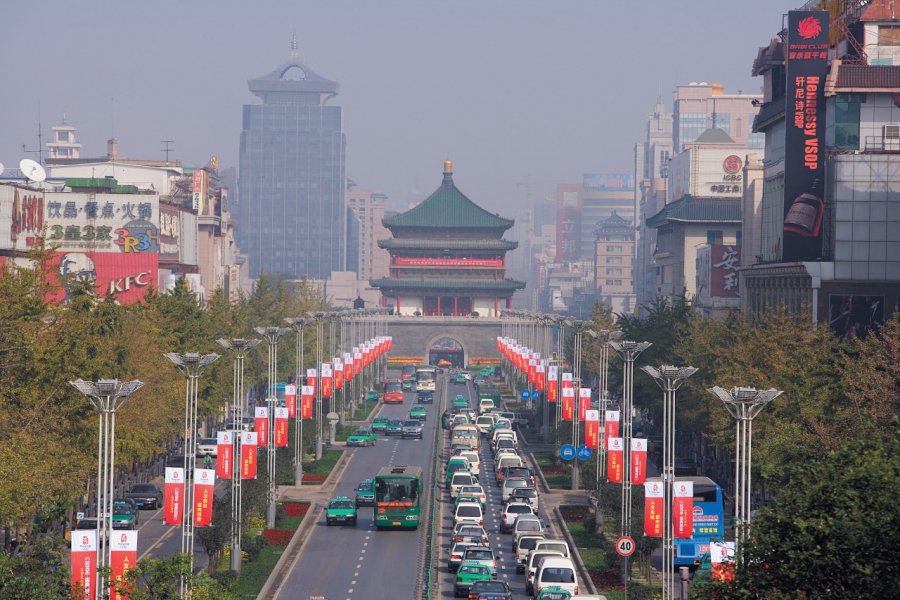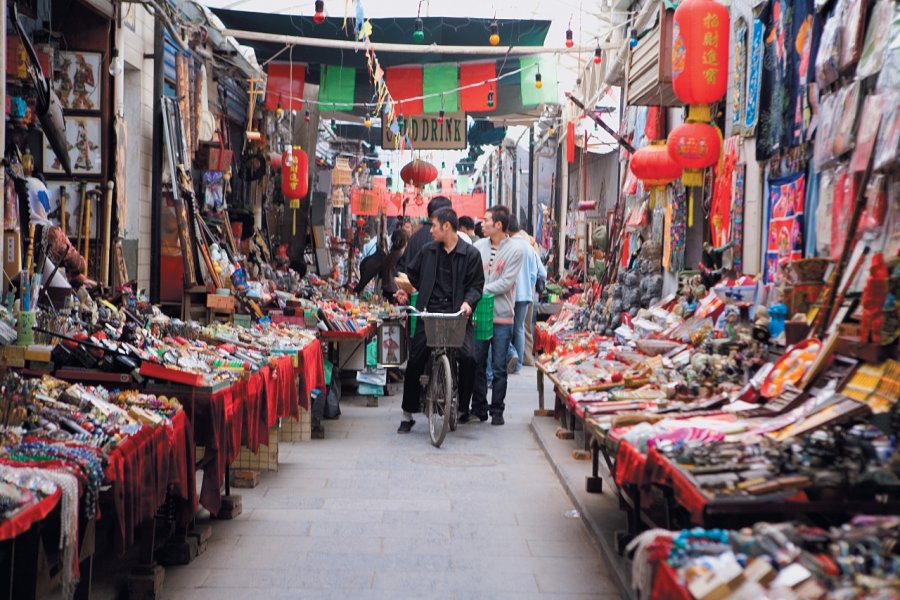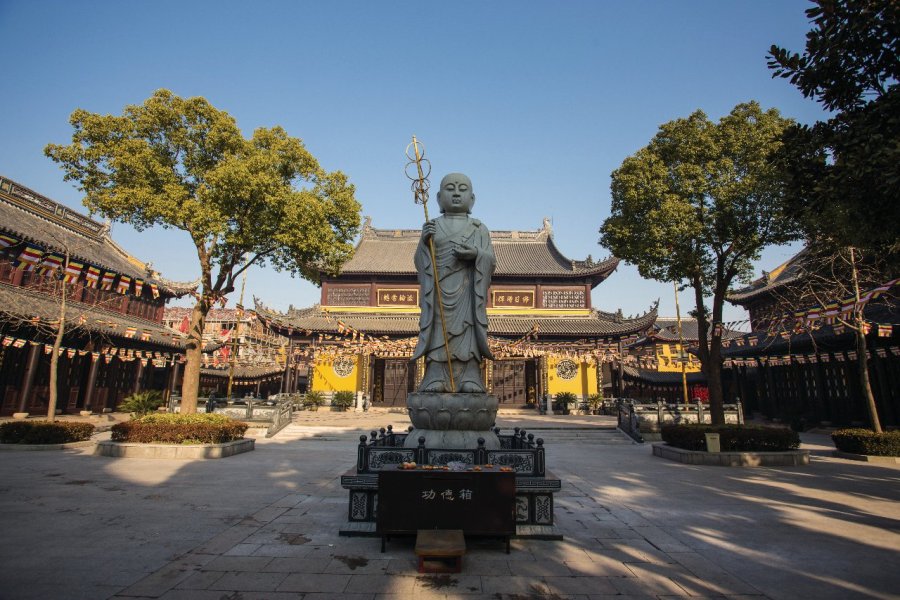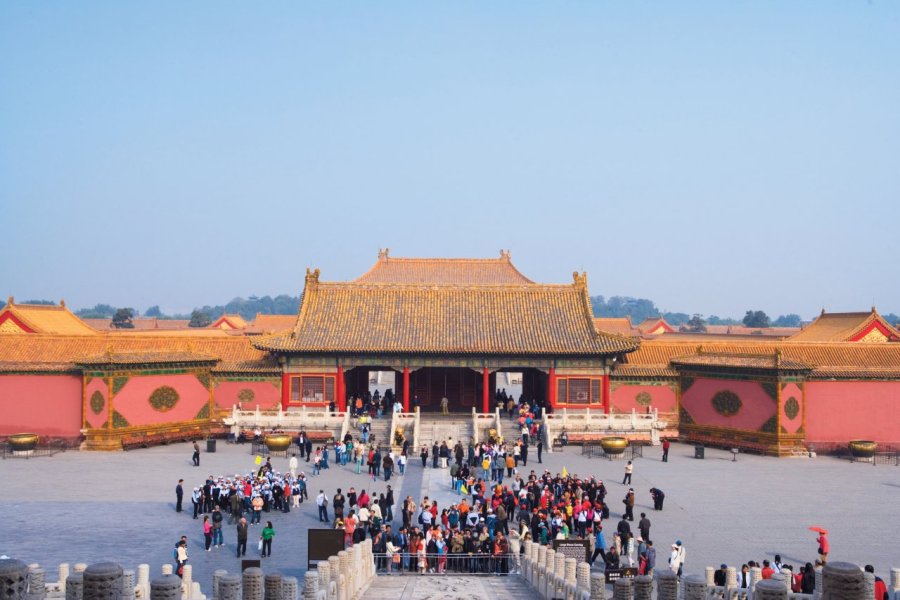Travel Guide Xi'An 西安
Find an accommodation
Advertising
Provincial Capital, Xi'an was once located at the end of the Silk Road. The capital of the Empire under the first Emperor Qing (from 221 BC to 210 BC), the city has many vestiges of this imperial splendor. It has more than 4 million inhabitants, including a large proportion of the population, the Chinese Muslim minority.Xi'an is now oriented towards tourism, and tourists are affluent both for its imperial remains and for the delicacy of its cuisine…HistoryAt the beginning of the Qin dynasty (from 350 BC to 207 BC), China is divided into "Five Combattants Kingdoms". Xianyang, north of the current Xi'an site on the other side of the Wei River, is the capital of the Qin kingdom where 37 lines of princes follow. But the last of them, Prince Qin Shihuangdi, will unify these five kingdoms by his conquests. Xianyang, the capital of the kingdom of Qin, then became the empire in 221 BC.Qin Shihuangdi, who proclaims himself as the first Emperor of China, makes the construction of this gigantic army of terracotta so that his reign in the kingdom of the dead is as prestigious as his reign on earth.This first emperor Qin Shihuangdi, a terrible dictator who has removed many scholars, is also a great administrator. It unifies the writing, imposes the standardization of weights and measures, and even the width of the roads and the size of the axles, it begins the construction of the Great wall… But its death leads to a succession war that ends the Qin dynasty.Liu Bang, an opportunistic commoner, seized power following the eruption of a revolt. It introduces the Han Dynasty (from 206 BC to 8 Apr. ), remarkable by its longevity and the achievements undertaken. Chang'an becomes the capital to the northwest of the current Xi'an location. Already at that time, the city is a crossroads of communication between East and west. Starting from Chang'an, leaving the Silk road, the large caravans bring silk and other Chinese luxury goods to Europe, passing through Cities to names that dream like Ferghana or Samarkand. The city rivals the time of importance with Rome. The nobility of the Roman Empire spends so much on silk, very popular, that it must be restricted.Under the Sui Dynasty (581-618), the capital Daxingcheng, "the city of great prosperity", travels on the current site of Xi'an. Renamed Chang'an under the Tang (618-907) in memory of the conquering period of the Han, the city then knew its apogee. Chang'an has more than a million inhabitants, a figure that was previously reached only by Rome and Alexandria. The ramparts of the time, which protect the city, but also the imperial courtyard, are much larger than those rebuilt later in the Ming and that we currently know.The Silk Road is a route for trade, but also for religions, so many of them enter China. Chang'an is a cosmopolitan city with Muslims, Christians, Nestorians and Well from Syria, Persian Zoroastrians… cults are not only tolerated but officially recognized. It is mainly Buddhism that is experiencing remarkable growth with pilgrimages in India, translations of rapportés from the Indian peninsula, the construction of monasteries and pavilions intended for study. The pagodas of the Wild Little Goose, the Huaqing Palace and the Great Mosque are among the buildings that have remained in us.Thirteen dynasties, some of them ephemeral, have established their imperial capital to Chang'an over a period of more than a thousand years. But even after this period, Chang'an remains the model of all the capitals of the sinisé universe. Towards the end of the Tang dynasty, Xi'an is attacked by the Tibetans and Turks and begins to decline, to become only a regional centre.Today todayToday Xi'an has 167 tombs in its region that are still unexplored. This is a considerable tourist potential. Local authorities, as well as tourism actors, are pushing for the opening of tombs. But Beijing refuses because it believes that the Chinese do not have the techniques to open them. They do not want to repeat the unfortunate experience of the terracotta army. Indeed, three days after having cleared the site of the terracotta army, the beautiful colours that were brought up by the soldiers disappeared in contact with air. Current techniques would allow the opening of tombs. The Japanese have thus proposed their collaboration. But the Chinese have so far refused. Since it is a national treasure, the Chinese want to carry out the operations themselves. As the tombs have not been opened, doubts remain about the accuracy of their location. Because if there are real tombs, there are also leurres. The opening of tombs is, moreover, not easy. Many protections have been placed. Steel slabs, very narrow access, even crossbows trapped and mercury plates. The body of the first emperor would be covered with mercury. Mercury becomes a lethal substance as it comes into contact with the skin. More than one pillard would have been caught in the trap, but others have succeeded more successfully. It should be said that archaeological objects abound in the basement of Xi'an and its surroundings. Did you not see that in Xi'the buildings are very low and do not find the crazy constructions of other cities of the same level of development? In Xi'an, real estate developers have a blue fear to fall in the search for foundations on archaeological treasures and to see their project cancelled. The farmers are not in the balance. Is it not a small peasant, when he wanted to dig a simple well, who would have discovered pottery heads and uncovered the site of the terracotta army? It is reported that other peasants would have discovered it before it but kept the secret. Because every Chinese who holds archaeological parts in the region and who sells them risk the death penalty. So some farmers would voluntarily push high corn to hide any attempts at digging. The wildest stories are circulating in the region on this subject. But the most surprising thing remains that much of ancient China's history is still buried underground and that these discoveries would yield valuable information about this period of history. Beautiful and informative discoveries in perspective…
What to visit Xi'An 西安?
Advertising
Weather at the moment
Advertising
Organize your trip with our partners Xi'An 西安
Transportation
Book your plane tickets
Car Rental
Boat rental
Accommodation & stays
Find a hotel
Holiday rental
Find your campsite
Tailor-made trip
Immersion travel
Services / On site
Activities & visits
Find a doctor
Xi'An 西安 travel inspiration
Find unique Stay Offers with our Partners
Pictures and images Xi'An 西安
Featured articles Xi'An 西安
Other destinations nearby Xi'An 西安
100 km away
